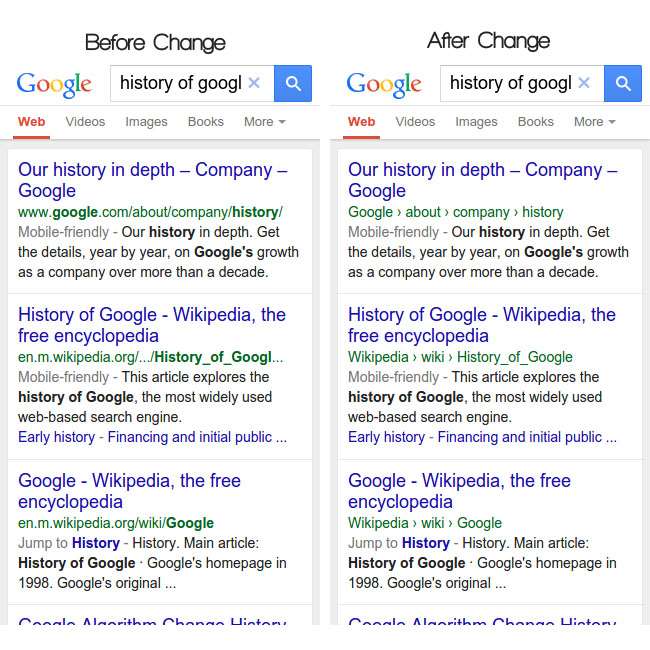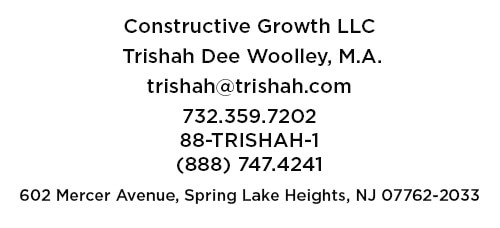Google changes URLs in search results

A few days ago I wrote a post on Google’s decision to change search results it shows based on the users device size. This means that unresponsive websites that were built to only be fully seen on desktop computers will be pushed down the search results for users surfing on mobile and tablets. So, if your website it not “mobile ready” IT’S TIME TO UPDATE YOUR WEBSITE!
Today, I’m sharing with you another Google change that will effect how your site is shown in their search results. In Google blog post on April 16, 2015 Better presentation of URLs in search results they state:
1. The website name to be used instead of the domain name
2. The URL structure of the URL as breadcrumbs
We all know that a good domain name that relates to your website content is important and until now Google has shown the domain name as part of the results. Now the “website name” will be what is featured. The difference can be seen in these two images:

Notice the difference in the green URLs. Originally they look like the URLs we see in the top of browsers. The new layout will show the name you give your website. In my case, my domain is “https://trishah.com/site” and is shown in Google search results shows “trishah.com” first. After the change, it will show “Web Design by Trishah” as that is the name I’ve given my site. If you use WordPress to run your website, you will find out what your website name is by going to Settings > General > Site Title however this is not yet Schema ready…
You can [also] change the site’s name through new Schema.org site name markup that was announced [here]. Yoast.com
Google changes URLs in Breadcrumbs
Another issue is how Google changes URLs path vs. the breadcrumb. If you don’t know, the breadcrumb is that line of URLs you can see under the logo at the top of this page that begins with “Home > Web Design Blog”. These are very helpful to users to find their way around your website and good for SEO.
This change means that your site’s URL structure becomes even more important than it already was. Ugly URLs will be even more visible in the search results than before. In our eBook Content SEO we wrote at length about site structure for SEO, and this article on site structure is still valid, though a few years older than the eBook. Yoast.com
To help with all these issues, I strongly encourage you to use Yoast WordPres SEO plugin. I add it to every website I’ve created for myself and clients for several years now. It creates the breadcrumbs you need when adding the provided code snippet to your theme. And, the newest update allows you to specify Schema information including your website name:

